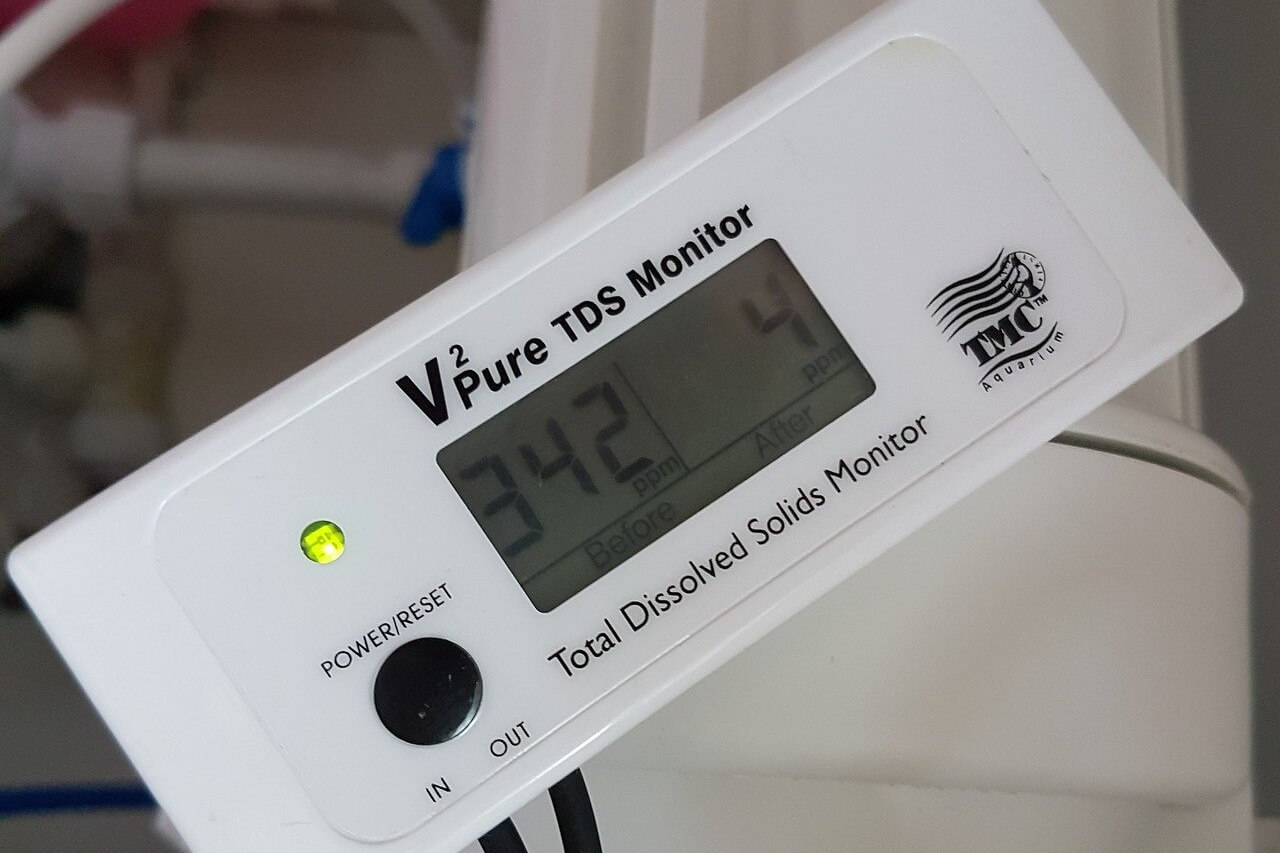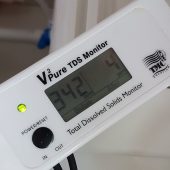How does total dissolved solids affect water quality? TDS, or total dissolved solids, affects water quality in different ways. Applications like aquariums, fishponds and hydroponics require water to be in a specific range in terms of TDS levels. Even drinking water has a recommended TDS range.
In this quick post, we look at how TDS affects water quality for different applications, and what you can do to reduce or increase TDS levels in water.
A quick reminder: TDS refers to minerals, salts and some organic compounds that have dissolved in water.
TDS levels vary greatly depending on location. Some areas in the UK have high levels of minerals and salts in the ground, which water picks up as it flows. Water pollution and water treatment methods like softening and filtration also affect the amount of total dissolved solids in water.
You can easily check the TDS levels (in PPM or parts per million) in your tap or aquarium water using a TDS meter.
TDS and Mineral Content

Most of the TDS in water consists of salts and minerals, particularly phosphates, calcium, sodium, nitrates and potassium.
The higher the PPM level measured with a TDS meter, the more mineral content is in the water.
Minerals in water are not bad. In fact, some of these minerals are good for your health. They also make the water taste good. That’s why some people don’t like reverse osmosis water since it contains no TDS, and thus no healthy minerals.
However, in some applications like aquariums, you need to be careful about the minerals in the water. Too much of certain minerals can stress the fish and plants. That’s why a 100-200 PPM range is recommended for aquariums.
In aquaponics, there is a big demand for mineral content in water since there’s no soil to provide the necessary mineral nutrients. Depending on the type of plants and growth stage, required PPM levels can be as high as 1,000 PPM.
TDS and pH
There isn’t a consistent relationship between the level of TDS in water and the water’s pH. Some minerals make the water acidic while others make it alkaline.
However, when there’s a high level of TDS in water, the water is more likely to be alkaline. That’s because most of the minerals that make up TDS in water are alkaline. That is why hard water is usually alkaline.
Water pH is important for many applications. For drinking water, a pH of 6.5-8.5 is ideal. There is some evidence that drinking alkaline water helps with certain health problems such as irritable bowel syndrome and reflux.
Adding minerals to low-TDS water can make it more alkaline, which improves taste and health benefits.
For tap water, you don’t want it to be too acidic or alkaline as that can corrode your plumbing and leach harmful contaminants into the water.
For aquariums, the ideal pH is 6.8-7.6.
For applications like aquariums and aquaponics, do not rely on TDS levels to determine the pH of water. As I mentioned, TDS and pH don’t always go hand in hand. Get a pH meter and a TDS meter and take separate readings.
If TDS is too high (making the water too alkaline), reducing it will help with other pH-control methods you use.
TDS and Water Hardness
Water hardness is caused by high mineral content. That’s why a higher level of TDS in water usually increases water hardness.
Starting from a TDS measurement of about 150 PPM, water starts getting hard. At 320 PPM, it’s considered hard water. Above 840 PPM, it is very hard water.
High amounts of TDS in water can cause problems in your plumbing and appliances. The high mineral content leave scale deposits in piping, faucets, water kettles and water heaters. This can clog your plumbing and electronics, causing damage.
Hard water is also difficult to clean with, whether you are cleaning dishes or your skin. It requires a lot of detergent to lather and can leave spots on utensils. Showering with hard water makes your skin dry and patchy.
Lowering TDS in water through methods like distillation and reverse osmosis will reduce scaling.
TDS and Water Contaminants
There’s some debate on how much TDS is safe for drinking water. Some experts argue that higher TDS levels mean we get more healthy minerals. Others, and some filter manufacturers, say lower PPM levels mean fewer harmful impurities.
TDS is not considered a water impurity, a relatively high levels of TDS in water are unlikely to cause you harm. That’s because TDS mainly consists of harmless minerals and salts.
However, a too high PPM figure is a good indicator of low quality water. The upper limit many experts agree on is 500 PPM. Above this, the water is likely to contain harmful impurities like heavy metals (arsenic, lead etc.), pesticides, chemicals and other contaminants.
If you measure your tap or well water with a TDS meter and get a measurement above 500 PPM, I recommend getting the water tested for specific contaminants. Then, get a filter that can remove or reduce those impurities.
How to Reduce Water TDS
If you need to reduce the amount of TDS in your water for whatever reason, here are some methods that work.
- Distillation – suitable for reducing TDS in drinking or aquarium water. Some people also prefer using distilled low or zero TDS water to brew coffee or beer.
- Reverse osmosis – RO filters are extremely effective at reducing TDS in water. Good RO systems can lower the PPM figure to almost zero. RO is great for purifying drinking water.
- De-ionisation – this method involves ion exchange. It removes ions of minerals and salts, which drastically reduces TDS.
How to Increase Water TDS
The easiest way to increase TDS is to add minerals to water. It’s easy to find supplemental minerals for drinking water online or at a pharmacy.
For aquaponics, add the recommended minerals and nutrients to the water.
For aquariums, you can mix distilled or RO water with tap water to achieve a balanced TDS range.


